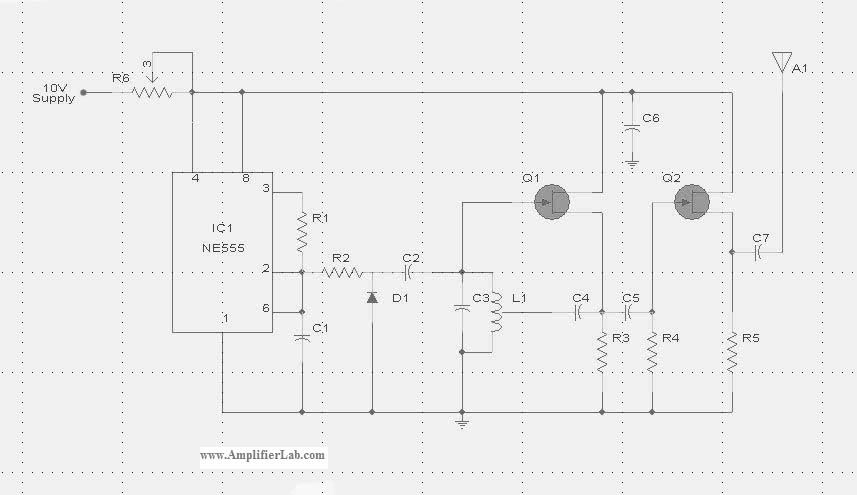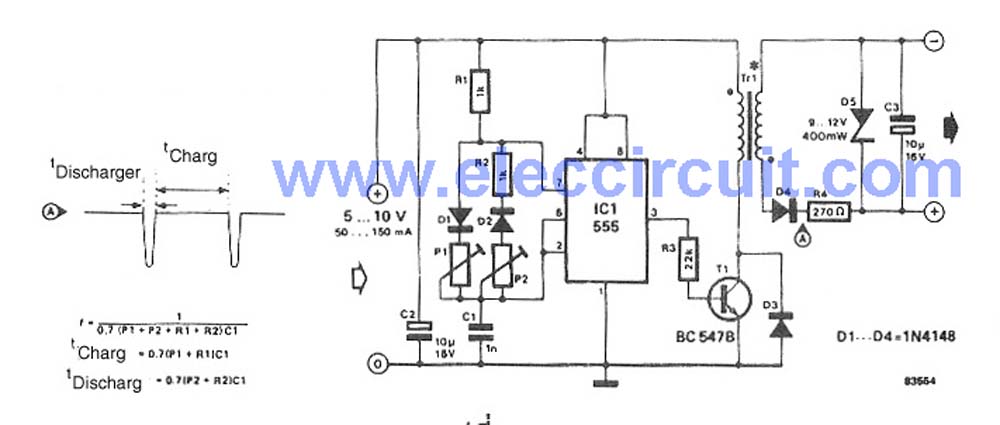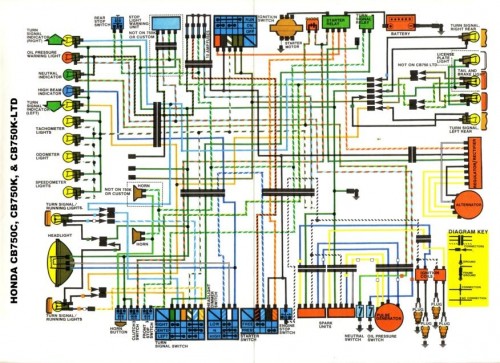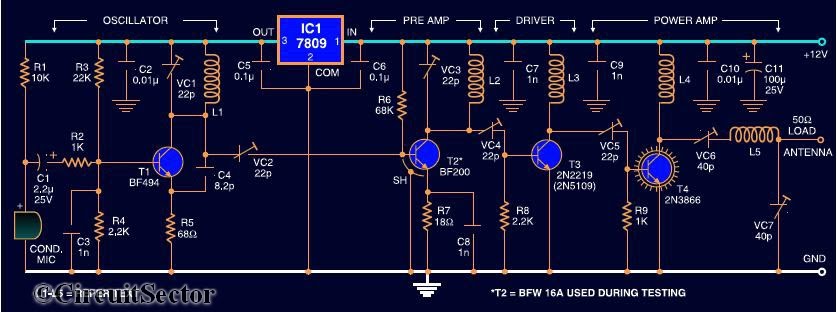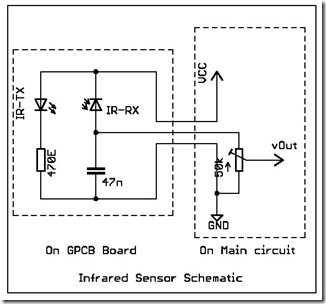
Simple Ir Transmitter
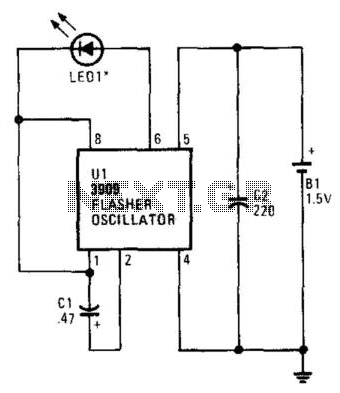
The flash rate of the IR diode is determined by the value of CI, a 220-µF capacitor that sets the oscillation rate at 1 Hz per second. Reducing CI will increase the frequency of the circuit, while larger values will decrease the frequency. Since the circuit emits single, narrow pulses of invisible light, the IR receiver responds with a click for each output pulse.
The circuit described utilizes an infrared (IR) diode as a light source, which operates based on a timing mechanism influenced by a capacitor. The capacitor, designated as CI with a value of 220 µF, plays a crucial role in determining the frequency of the oscillation. This frequency is set at 1 Hz, meaning the IR diode emits one pulse of light per second.
Adjusting the capacitance value of CI directly affects the frequency of the oscillation. A decrease in the capacitance value will lead to an increase in the frequency, resulting in more rapid pulses of infrared light being emitted. Conversely, increasing the capacitance will lower the frequency, causing the IR diode to emit pulses at a slower rate. This characteristic is essential for applications requiring precise control over the timing of the emitted signals.
The output from the IR diode consists of single, narrow pulses of light that are not visible to the human eye. The design of the circuit ensures that each pulse is distinct and brief, allowing for clear signaling. An IR receiver, which is sensitive to these infrared pulses, is integrated into the system. The receiver is designed to respond to each emitted pulse with a corresponding click, providing an audible indication of the activity of the IR diode.
This circuit configuration is commonly utilized in remote control applications, data transmission, and various sensing technologies where the communication or signaling is achieved through infrared light. The simplicity and effectiveness of this design make it suitable for a range of electronic projects where non-visible light signaling is required. The IR diode"s flash rate is determined by the value of CI, a 220-Â¥ capacitor that sets the rate of oscillation at 1 Hz per second. Reducing Ci will increase the frequency of the circuit, while larger values will decrease the frequency. Because the circuit only sends out single, narrow pulses of invisible light, the IR receiver only responds with a click for every output pulse.
The circuit described utilizes an infrared (IR) diode as a light source, which operates based on a timing mechanism influenced by a capacitor. The capacitor, designated as CI with a value of 220 µF, plays a crucial role in determining the frequency of the oscillation. This frequency is set at 1 Hz, meaning the IR diode emits one pulse of light per second.
Adjusting the capacitance value of CI directly affects the frequency of the oscillation. A decrease in the capacitance value will lead to an increase in the frequency, resulting in more rapid pulses of infrared light being emitted. Conversely, increasing the capacitance will lower the frequency, causing the IR diode to emit pulses at a slower rate. This characteristic is essential for applications requiring precise control over the timing of the emitted signals.
The output from the IR diode consists of single, narrow pulses of light that are not visible to the human eye. The design of the circuit ensures that each pulse is distinct and brief, allowing for clear signaling. An IR receiver, which is sensitive to these infrared pulses, is integrated into the system. The receiver is designed to respond to each emitted pulse with a corresponding click, providing an audible indication of the activity of the IR diode.
This circuit configuration is commonly utilized in remote control applications, data transmission, and various sensing technologies where the communication or signaling is achieved through infrared light. The simplicity and effectiveness of this design make it suitable for a range of electronic projects where non-visible light signaling is required. The IR diode"s flash rate is determined by the value of CI, a 220-Â¥ capacitor that sets the rate of oscillation at 1 Hz per second. Reducing Ci will increase the frequency of the circuit, while larger values will decrease the frequency. Because the circuit only sends out single, narrow pulses of invisible light, the IR receiver only responds with a click for every output pulse.
